Strawberry powdery mildew
Sphaeroteca macularis
Profile
Strawberry powdery mildew is a fungal disease that occurs mainly on strawberries. The infestation is recognizable by discoloration and subsequent drying of the leaves. Strawberry powdery mildew is particularly a problem in protected cultivation, but also frequently occurs outdoors in more susceptible varieties.
Biology
The pathogen overwinters as mycelium or in the main fruiting form on the old leaves or fruit mummies infested in the previous year. The fungal spores are transferred by wind to fresh tissue from spring onwards, where they germinate under suitable conditions after 7 - 14 days and cause infections. Each year, the fungus produces many generations of spores, through which rapid spread occurs in the stand. Like all powdery mildew fungi, the fungus requires warm, dry conditions for its development; it is of less importance in cool seasons with high precipitation.
Damage symptoms
Symptoms in the stand:
Infection can be clearly identified by leaf symptoms. In cases of heavy infestation, diseased plants can be recognized from a distance by their withered appearance.
Symptoms on the leaves:
The typical symptom of strawberry powdery mildew is the curling of the leaves upward, with an initial reddish discoloration on the underside of the leaves. As the disease progresses, the leaves dry out completely. The formation of the main fruiting form of the fungus is very rare, it is most likely to be found in ever-bearing varieties when short-day conditions already prevail in late summer, with cooler temperatures and high humidity. In strawberries in the foil tunnel, the fungus is also often found on the upper side of the leaf, in contrast to infections in the open field.
Symptoms on flowers and fruits:
Infected flowers usually die completely or deformed fruits develop. If immature fruits are attacked by powdery mildew, they turn light brown and become hard. The strawberries do not ripen and the nutlets emerge strongly. If ripe fruits are attacked, they show a very soft consistency. On the surface, the fungus can form spores under favorable conditions, which is visible by a fine powdery mildew coating.
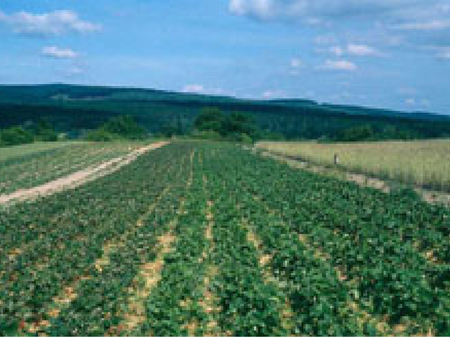
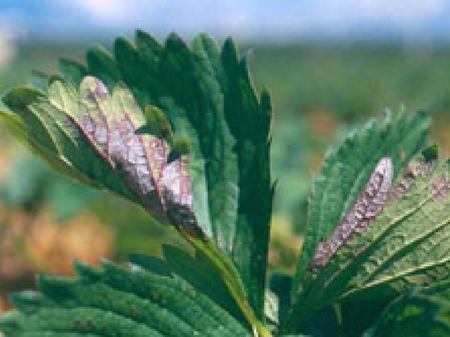

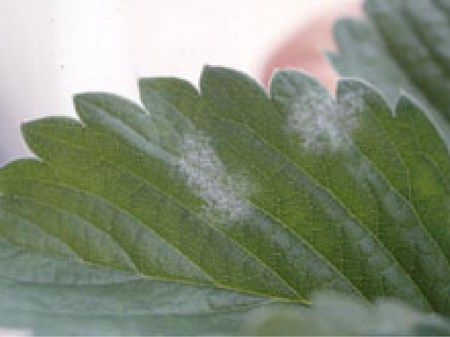
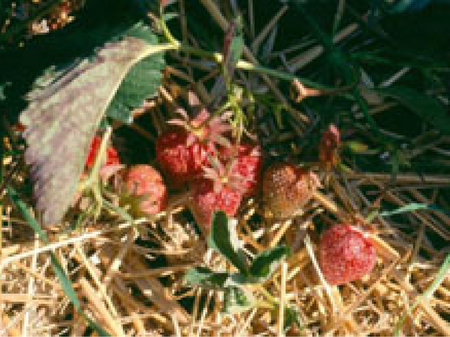
Host plants
Besides strawberries(Fragaria spp.), hops(Humulus spp.) are also of economic importance as host plants.
In susceptible strawberry cultivars, e.g. Lambada, Darselect, Elsanta, as well as in everbearing cultivars, powdery mildew also frequently occurs in the open field.
It also occurs on a variety of host plants in the rose family (Rosaceae): including agrimony (Agrimonia spp.), lady's mantle(Alchemilla spp.), meadowsweet (Filipendula spp.), carnation root (Geum spp.), cinquefoil (Potentilla spp.), roses(Rosa spp.), raspberries and blackberries(Rubus spp.), and meadow grass (Sanguisorba spp.). Additionally also on willowherb(Epilobium spp.) and cranesbill(Geranium spp.).
Economic importance
If the fungus finds favorable conditions and infections occur early in the season, massive damage can occur to the leaves, affecting flower set and yield in the crop year. Via blossom and fruit infections, infestation can also directly affect the crop.
If the disease does not occur until late summer, flower bud set has already occurred and powdery mildew will not affect next year's crop even if the infestation is more severe. In this case, however, problems must be expected next spring and appropriate measures must be taken.
Prevention and control
- Wind-protected, enclosed sites and multi-row planting systems are favorable to powdery mildew and should be avoided
- Susceptibility of cultivars varies widely. Varieties that are less susceptible include Mars, Kimberly, and Pegasus, for example
- In biennial cultivars, foliage should be mowed after the first harvest to reduce infection pressure
- Plant protection should be applied to susceptible cultivars and/or unfavorable locations in spring from longer periods with temperatures above 15-18 °C and intensive new leaf formation (see list of plant protection products approved in Austria)
Specialized information
Microbiology
Strawberry powdery mildew belongs to the true powdery mildew fungi. As a tubular fungus (ascomycete), it forms a main fruiting form (chasmothecia). In addition, it forms chains of fungal spores (conidia).
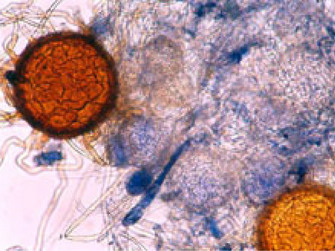
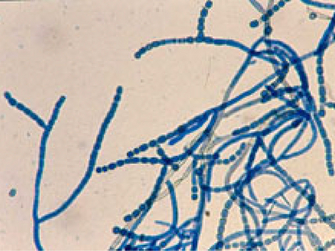
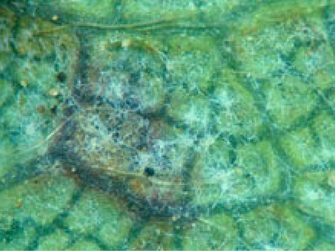

Last updated: 05.09.2024
automatically translated